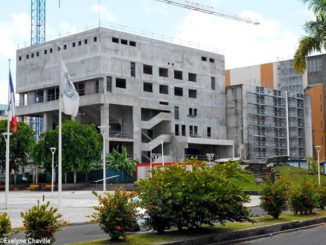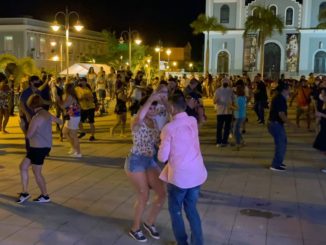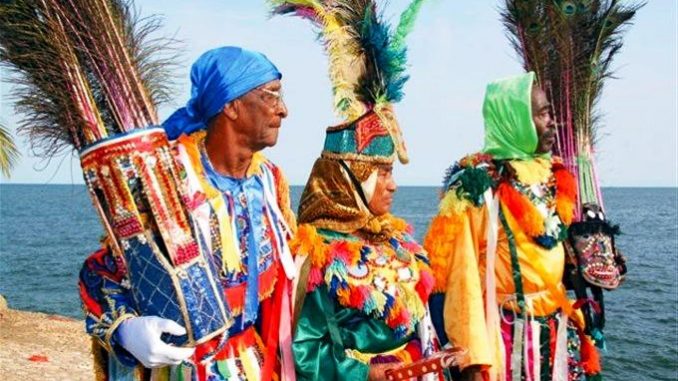
In the east of Dominican Republic is a town called San Pedro de Macorís, located 45 minutes from the Dominican capital. A land which reached its apogee several decades ago, a productive land which had the main sugar factories of the country.
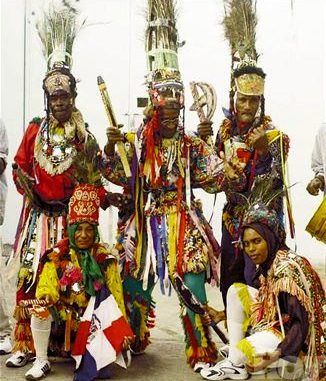
Over there emigrated to work not only people from other provinces, but also people from other countries and other islands who were looking for a job in this place that also had other rich sources of employment such as free trade zones – large plants where were made all kinds of things – as well as a port where the world’s largest ships used to drop anchor.
Some of the people who emigrated to work in the cane fields came from small islands like Antigua, Martinique, Tortola and others influenced the inhabitants of San Pedro de Macorís not only at the culinary level, but also with their folklore. From this rich cultural melting were born The Guloyas, an artistic event where the members are characterized by wearing colorful costumes and by joyous and contagious dances.
According to the historians, the name of “Guloya”, comes from Goliath, the biblical story of David and Goliath, this inspiration created The Guloyas.
Their wardrobe is characterized by a colorful costumes where red, yellow, blue, green and orange predominate, these clothes are decorated with small mirrors, colored ribbons, a cape and a long hat made with feathers complete the loud dress.
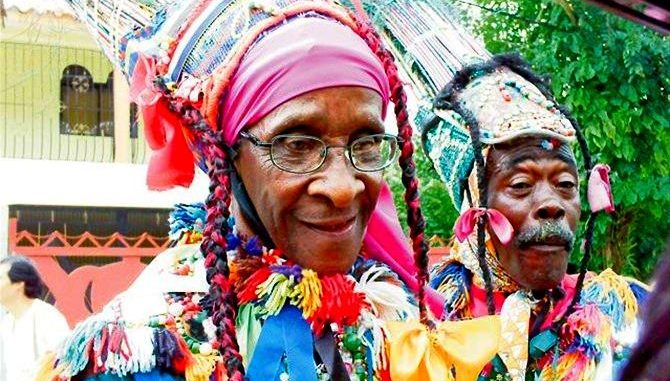
The birth of Cocolos
The foreigners became integrated so that little by little the Dominicans embraced their traditions, something that was inevitable because by being a family, a new blood called “Cocolos” was created. Children who were born of these unions learned to speak both languages : Spanish and English. The English and the Dominicans merged all their culture what made it richer than it already was.
This cultural explosion occurred in the late 19th century and, nowadays in San Pedro de Macorís, The Guloyas still prevail with strength although almost all of the founders died.
Although the main dates when The Guloyas come out to perform with their dance to the people of the town are December 25 and January 6, during carnival and the patron festivities, we also see them dancing to the beat of the bass drum, triangle, flute and kettle, the instruments that compose their music.
There is no doubt that The Guloyas are one of the most important cultural events, not only for the inhabitants of San Pedro de Macorís where they originated but also for the whole country and the Caribbean islands and more since in 2005, the United Nations Educational, Scientific and Cultural Organization (UNESCO) proclamed them “a Masterpiece of the Oral and Intangible Heritage of Humanity”, this recognation filled with pride all Dominicans.
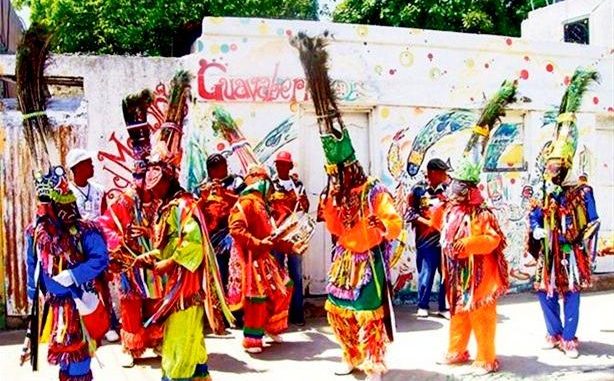
The African influence of Guyolas
Claudio Rivera, a theatre person from San Pedro de Macorís, releases this statement on the website of his Guloya Theatre, a name he chose as a tribute to The Guloyas : “The English peoples of the Lesser Antilles are the product of the racial mixing of black people, former slaves imported from Africa, with British slavers and colonizers, the former being the majority group, whereas obviously the latter maintained the political, economic and social hegemony and thus, the cultural hegemony. Music, dances and “Cocolas” songs show these two components (…) Their music, for example, is composed of a rhythm that is almost entirely of African influence, likewise, every movement and step of their dances are from African culture. However, when the dances are dramatized, most of the arguments are based on biblical “good lessons” or on British legends”. In addition, the British influence is felt in the words and the themes of “Cocolas” songs. As regards the dances, whether they are dramatized or not, the ensemble orchestral Cocolo that accompanies them is formed by a “base drum”, a “kettle drum” and a triangle, sometimes a flute.
At present, they survive only in the Cocolos enclaves of San Pedro de Macorís and La Romana.

